Let’s talk straplines. Wait… Is that a strapline?
So we’ve all heard the term strapline before, right? We see and hear them almost every day. Many straplines have been in use for decades and we just ‘know’ them. Maybe your brand uses one, but what are straplines for? Is there a difference between a strapline, tagline, slogan, or jingle? Have you ever wondered why some brands use straplines and some don’t, and is there ‘a secret’ to writing a great one?
I bet without thinking too hard you could recite at least two or three examples of brand straplines or slogans – you might recall some of these: Tesco’s “Every Little Helps”, Nike’s “Just do it”, McDonald’s “I’m lovin’ it” or Redbull’s “Gives you Wings”. All examples of ‘modern’ straplines, but where do straplines come from?
It turns out the word ‘slogan’ refers to a ‘battle cry’. It’s derived from slogorn which was an Anglicisation of the Scottish Gaelic and Irish sluagh-ghairm (sluagh “army”, “host” + gairm “cry”). English speaking folks have been using the term since 1704. Its definition was “the distinctive note, phrase or cry of any person or body of persons.” Slogans were common throughout the European continent during the Middle Ages; they were used primarily as passwords to ensure proper recognition of individuals at night or in the confusion of battle.
 A famous scene in the movie Braveheart involves Mel Gibbon, who plays the part of Sir William Wallace, Scottish knight fighting for independence from England, where he rallies his troops for the battle of Stirling Bridge in 1297. After his emotional speech, he shouts “Alba gu bràth”, which is Scottish Gaelic for “Scotland Forever” – powerful stuff. Fast forward to 2007 and although this historic phrase was still in use on the shirts of Scotland’s National Football Team, the Scottish tourism slogan was changed from, “The Best Small Country in the World” to… “Welcome to Scotland”. As straplines go, perhaps not the most original.
A famous scene in the movie Braveheart involves Mel Gibbon, who plays the part of Sir William Wallace, Scottish knight fighting for independence from England, where he rallies his troops for the battle of Stirling Bridge in 1297. After his emotional speech, he shouts “Alba gu bràth”, which is Scottish Gaelic for “Scotland Forever” – powerful stuff. Fast forward to 2007 and although this historic phrase was still in use on the shirts of Scotland’s National Football Team, the Scottish tourism slogan was changed from, “The Best Small Country in the World” to… “Welcome to Scotland”. As straplines go, perhaps not the most original.
Nowadays, the term ‘slogan’, is most associated with the advertising industry and means a short, striking, memorable phrase or motto. In consumer product competitions, entrants are sometimes asked to create ‘a catchy slogan’ as part of a tiebreaker question. I wonder how many of those ‘tiebreaker’ ideas have ever got used? Slogans are generally aimed at the widest audience, but they can also be directed at specific target groups or time-bound campaigns and promotions.
The term ‘tagline’ is more commonly used in the USA and is just another word for strapline, as are the terms; endline, baseline, signature, claim and pay-off. Why does our industry use so many different names for the same thing? Reinvite to resell perhaps? Inuits and nomadic people the world-over are still way ahead of us marketers however. They have over 300 words to describe snow and ice – but we digress.
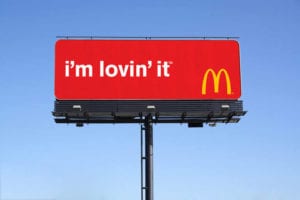 A ‘jingle’, on the other hand, is a short song or tune. Jingles are a form of sound branding and provide an ‘earworm’ that links a sound, tone or melody with a product or service. They can be instrumental or combine with a slogan, that’s either spoken or sung. They were once very common in TV advertising, but are now mostly heard on radio stations; brand audio signature’s or audio logos are more common. Think of Intel’s five notes. You’re probably humming them in your head right now, or Macdonald’s, “I’m Lovin’ it”. The “ba da ba ba ba” vocal hook, was originally sung by Justin Timberlake back in 2003. Over time and with the millions spent on advertising, it’s become synonymous with the brand and we don’t even think of Justin at all when we hear the melody.
A ‘jingle’, on the other hand, is a short song or tune. Jingles are a form of sound branding and provide an ‘earworm’ that links a sound, tone or melody with a product or service. They can be instrumental or combine with a slogan, that’s either spoken or sung. They were once very common in TV advertising, but are now mostly heard on radio stations; brand audio signature’s or audio logos are more common. Think of Intel’s five notes. You’re probably humming them in your head right now, or Macdonald’s, “I’m Lovin’ it”. The “ba da ba ba ba” vocal hook, was originally sung by Justin Timberlake back in 2003. Over time and with the millions spent on advertising, it’s become synonymous with the brand and we don’t even think of Justin at all when we hear the melody.
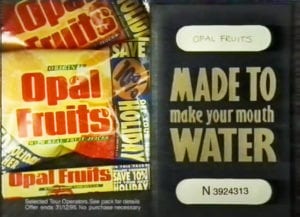 As a kid, I was blissfully unaware that Murray Walker, the UK’s best known Formula 1 racing commentator was once an ad man. He came up with the Opal Fruits, “Made to make your mouth water” jingle. Novelist Salman Rushdie also worked as an advertising copywriter. He wrote the strapline “Naughty. But nice” for the UK Milk Board’s fresh cream cakes campaign in the 70s.
As a kid, I was blissfully unaware that Murray Walker, the UK’s best known Formula 1 racing commentator was once an ad man. He came up with the Opal Fruits, “Made to make your mouth water” jingle. Novelist Salman Rushdie also worked as an advertising copywriter. He wrote the strapline “Naughty. But nice” for the UK Milk Board’s fresh cream cakes campaign in the 70s.
The term ‘strapline’ comes from the newspaper industry and was used to describe what we now call a sub-heading (a bold line to summarise the text to follow, made by a sub-editor).
A strapline is part of a brand’s visual identity and usually appears in specific places, most often:
• Underneath or near to a logo or icon, or
• At the end of a communication statement, like a marketing full stop. This could be at the bottom of a print advert or perhaps the last frame on a corporate video or TV advert.
At restless, when we developed the strapline “Light Your World” for our global lighting client Sylvania, this was the placement strategy we employed. This flexible approach meant the strapline was not permanently tethered to the logo, thereby allowing greater flexibility in its application.
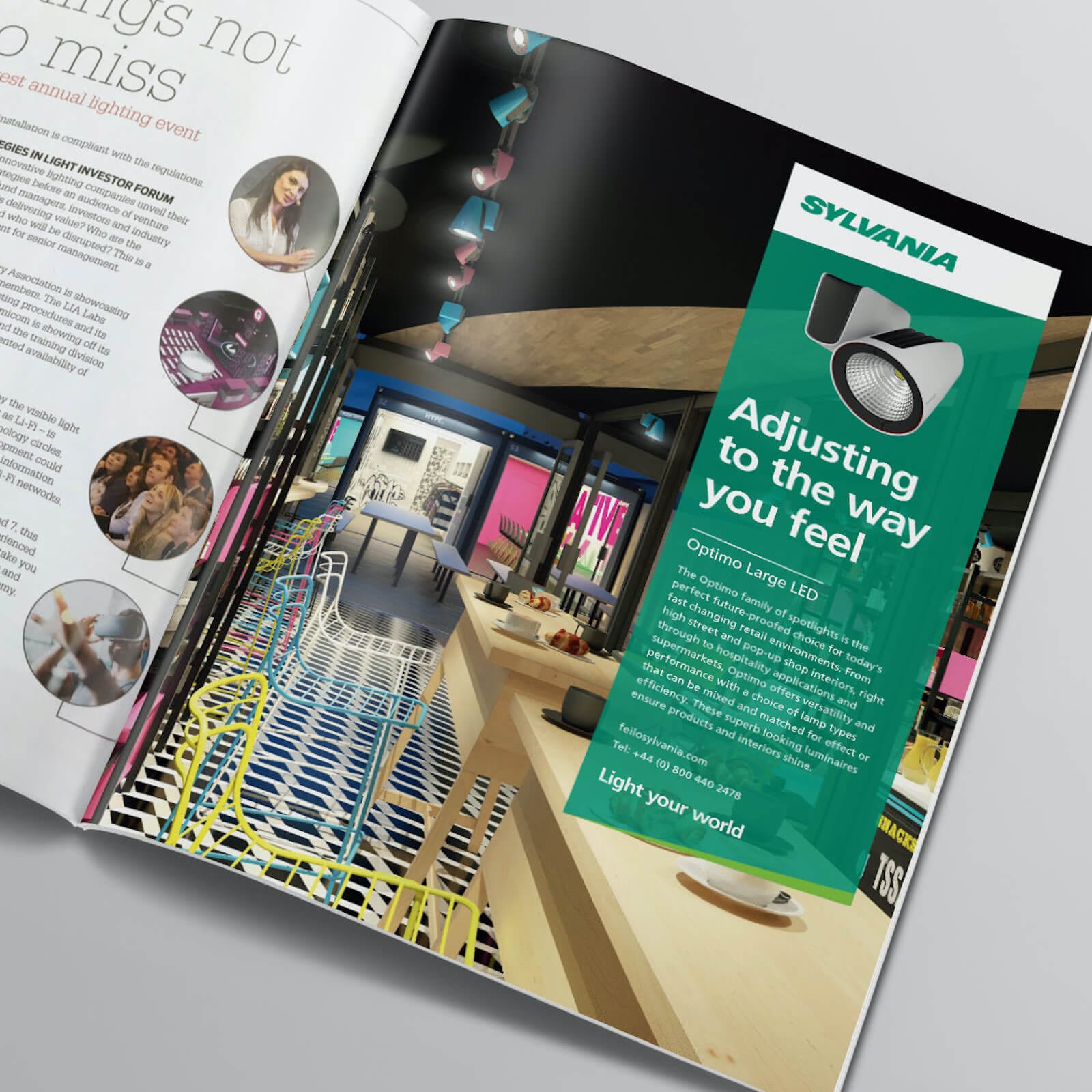
So what’s the purpose of a strapline?
As humans, we like to think of ourselves as intelligent; able to assimilate, recall, and interpret all the information we receive daily. The truth is, for most of us, we forget 90% of all the information we are exposed to. The information has to be important to us and be distinctive to have any hope of being remembered. When it comes to brands, the reality is (to everyone not involved with marketing in some way), they only represent ‘small things’ in our lives. To remember a brand long-term we have to be exposed to it repeatedly over time. A strapline is a great way to capture the attention of an audience and give them something memorable to latch onto. The acronym KISS for “Keep it simple stupid”, a design principle noted by the US Navy in 1960, sums it up perfectly – it’s also a slogan!
Did you know that there are different types of strapline?
Depending on what message you are trying to communicate and what brand personality you want to convey, straplines can be put into four ‘broad’ categories.
Descriptive
These straplines aim to simply explain the ‘basics’ in some way. What a brand is, or what a product or service does. Start-ups often use this kind of strapline to make sure their audiences understand what they do. Examples of this type would be Innocent’s “Little Tasty Drinks”, eBay’s “The world’s online market place” or Intel’s “Intel Inside”. Descriptive straplines can have a ‘shelf-life’. Over time customers may no longer need a handy reminder of what a brand does. At times of major business change, looking for new investment or being bought or sold, for instance, a new strapline as part of either a brand refresh or rebrand, can help a brand communicate a new direction with audiences.
Confident
These straplines aim to instill what makes a brand special and worthy of attention, they can also help describe their product or offer. Examples of this type would be BMW’s “The ultimate driving machine”, Budweiser’s “King of Beers” or Maybelline’s “Maybe she’s born with it. Maybe it’s Maybelline”. Long-established brands may choose to reflect their heritage with a strapline that contains a founding date such as Lindt’s “Master Chocolatier since 1845” or Fortnum & Mason’s “Est 1707”.
Promise
This type of strapline re-enforces the kind of relationship a brand intends to have with their audience. It sets out what the brand will do for their customers. Examples of this type would be Tesco’s “Every Little Helps” or the straplines we wrote for our clients Felsted School “Developing character, making a difference”, and Woods Food Service “Delivering Excellence”.
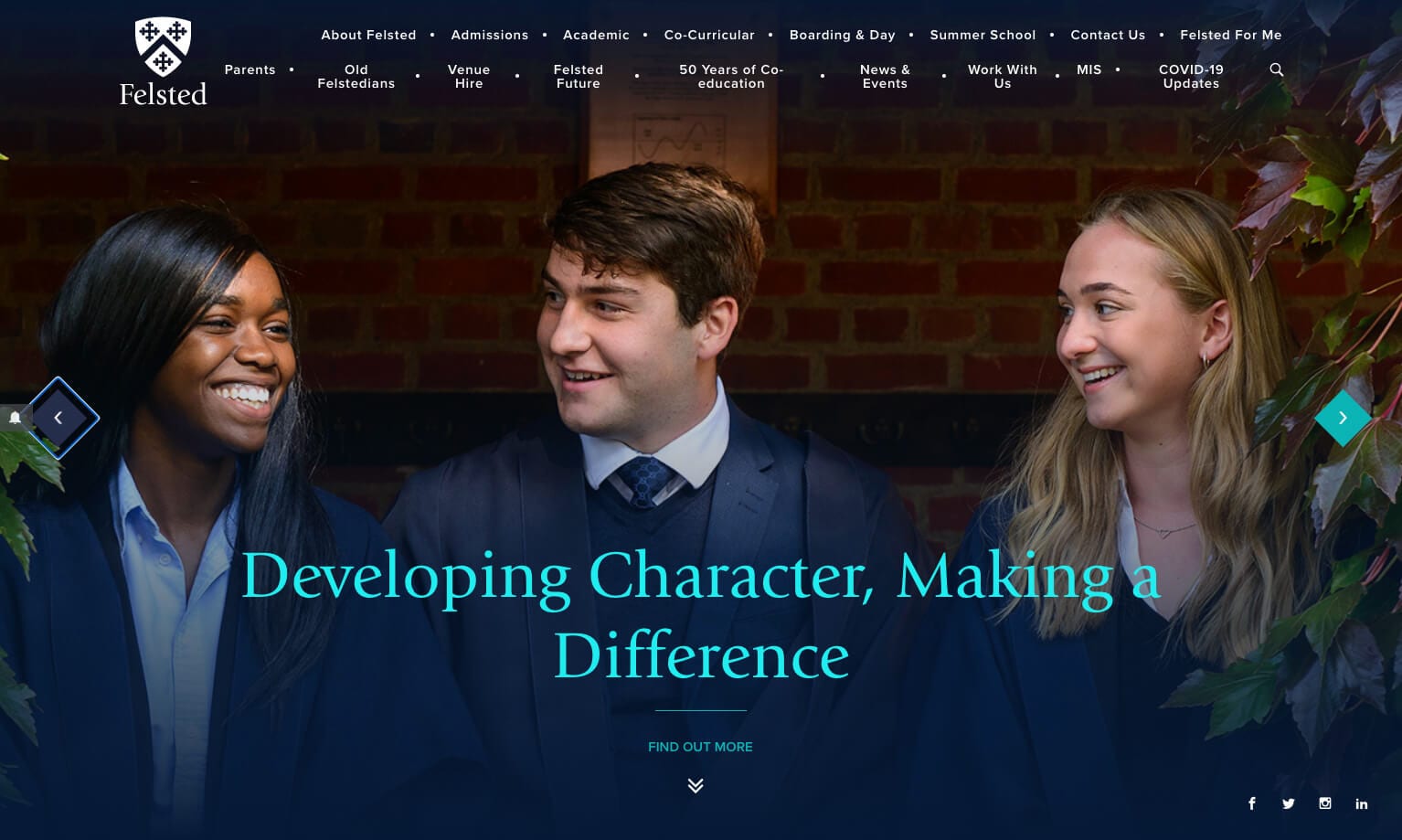
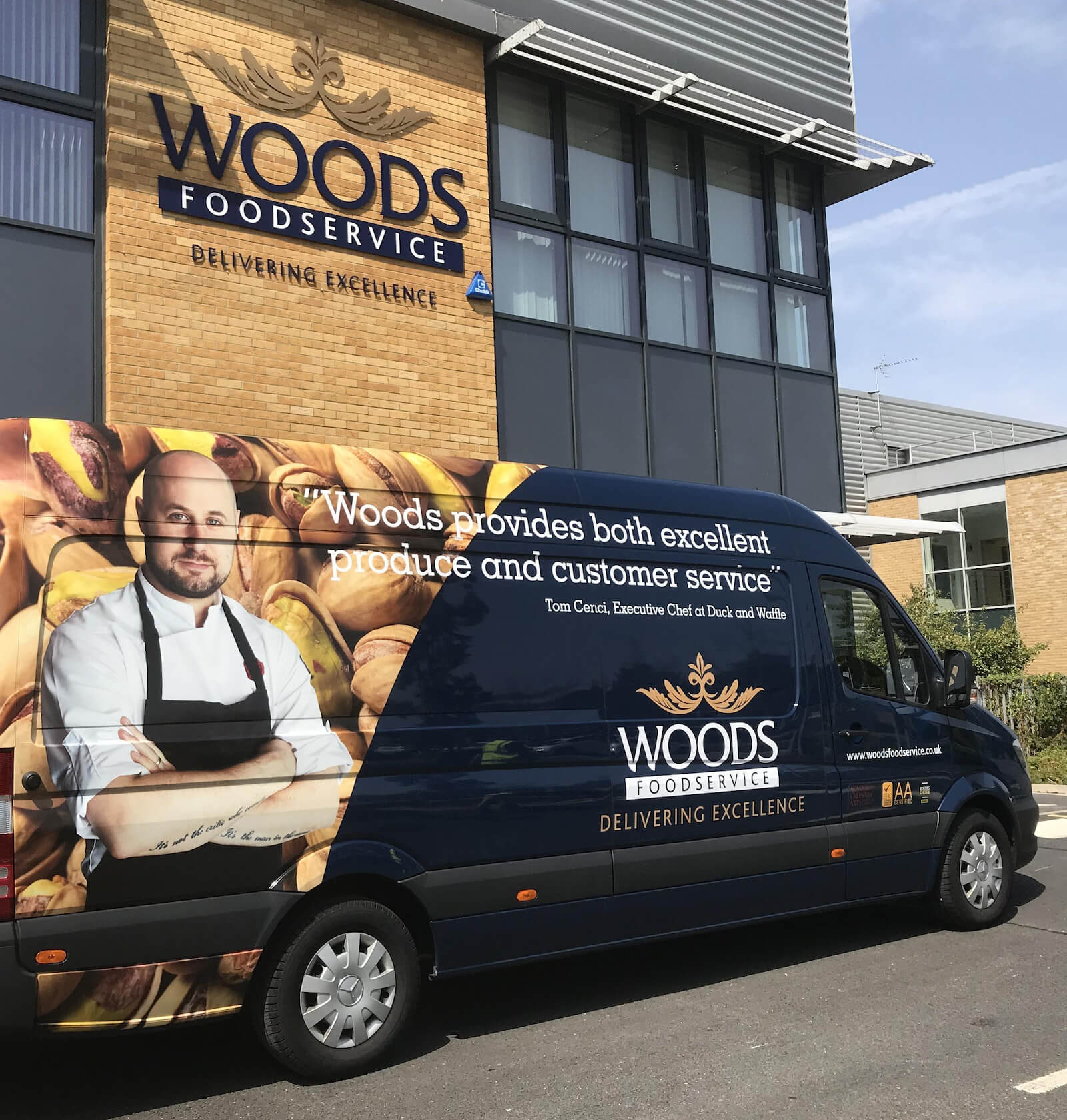
Motivational
Motivational straplines aim to tell a brand story or sum up the ‘essence’ or ‘DNA’ of a brand. They can also inspire people to take action or make a change. Established brands sometimes choose this route when they need to remind their audience of their story. Examples of this type of strapline would be, Nike’s “Just do it”, Apple’s “Think Different”, “Light Your World” and “True Brilliance” the straplines we developed for our international lighting clients, Sylvania and Nualight respectively.
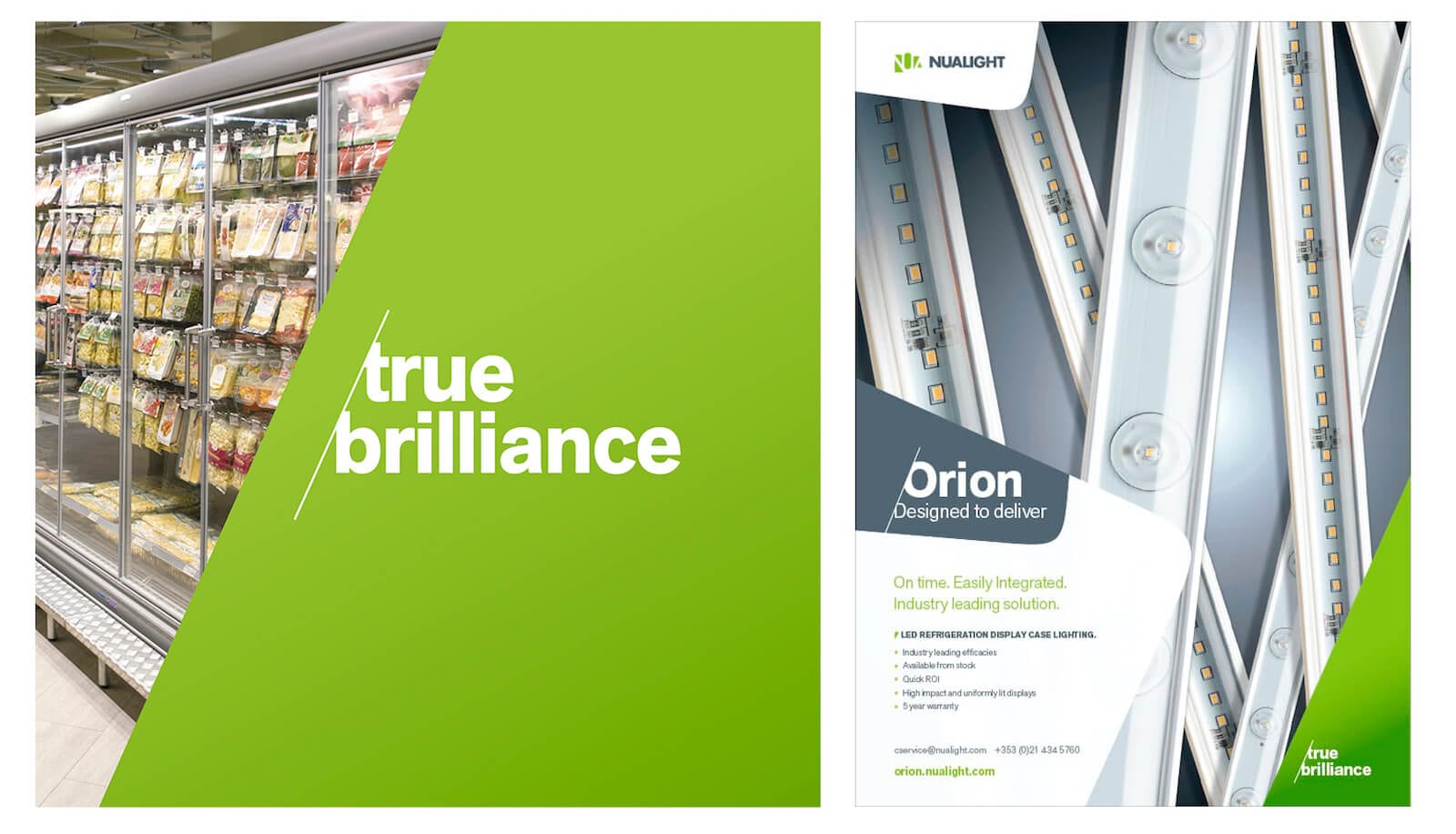
Why do some brands use straplines and some don’t?
On the face of it when you look at successful brands that have emerged recently some ‘appear’ not to be using straplines at all. Here’s a challenge for you. Can you name the straplines for any of the following brands (that most of us use nearly every day, by the way)? Google, YouTube, Facebook, WhatsApp, Uber, Just Eat, Netflix or Spotify.
Got anything? Chances are, like me, you don’t. You’ll have to go searching for them, but they’re difficult to track down.
It appears that some of these brands have used straplines for only a few years and then changed or dropped them altogether. Spotify for instance – has used the strapline, “Music for everyone” in the past, but now favours “Listening is everything”. It’s unclear if Facebook has ever had a strapline; it’s certainly not obvious. The original unofficial ‘motto’ of Google was “Don’t be evil”. When Google changed its corporate name to Alphabet in 2015, they changed their message in their corporate code of conduct to, “Do the right thing.” It’s still not used as a strapline though. Finally, Netflix’s “See what’s next”, or “Watch anywhere. Cancel anytime.” It depends where you look. However, perhaps most people wouldn’t need to ‘see’ anything at all to know they’re watching Netflix. Their 2 note, sound logo, precedes every programme or movie.
Online accommodation brand Airbnb started back in 2008, but when they rebranded in 2014, they changed their strapline from “travel like a human” to the far more compelling, “belong anywhere”, which is still in use today.
It’s not surprising really that we can recall more FMCG, fashion and car brand straplines than for corporate or business to business brands. They often have big budgets to promote them on mass-market media like Out of Home (OOH), TV, radio, newsprint, and social media. Consistent exposure over time, across multiple media channels, is the key to brand recall.
It could be that these more recent challenger brands that owe their success to the contextual use of the ‘digital’ online or ‘app’ medium, feel their brand DNA is best communicated via their ‘great user experiences’ and ‘engaging content’. For some of them at least, they clearly don’t see the value of using a consistent strapline. It’s fair to say that when some straplines confuse rather than clarify, making sure your strapline says ‘the right thing’ is vital.
Tips for writing an effective strapline
Although there’s no universal method for creating the perfect strapline, there are some tips you can use to increase your chances of striking gold.
1. Choose your style – Decide what type of strapline best suits your communication objective.
A fundamental aspect of great marketing is finding a way to differentiate within a market. Can you use your strapline to communicate your competitive advantage?
2. Keep it short and simple (if you can) – Keeping your strapline to a short phrase will increase its chances of being memorable. There are exceptions to this rule, of course, for instance, “There are some things money can’t buy. For everything else, there’s MasterCard”. A great example of a ‘Confident’ strapline. Using memory-enhancing writing techniques like rhyme, alliteration and repetition can also help when writing straplines and slogans. Make it rhyme – “Beanz Meanz Heinz”, or use alliteration like “Intel Inside”. “When it absolutely, positively has to be there overnight” worked for FedEx and helped them become of the world’s largest air-cargo carriers. Adding repetition created memorability.
3. Use emotion – Integrating positive emotion into your strapline can help to capture your audience’s attention and be remembered. An emotive strapline should align with how you want your product or service to make your customers feel, that could be a sense of security, luxury, or inspiration. Emotions have a powerful influence on our behaviour and our social evolution has conditioned our brains to respond more to messages that make us ‘feel’ something.
4. Be truthful – It goes without saying that you have to be able to back up your claim to be “The best” or, “No1”. If you want to focus attention on your ‘outstanding customer support’, make sure you’re really nailing it? Just saying it doesn’t make it truthful. If the reality doesn’t match your claim your audience will soon tell you.
So despite the apparent ‘on-off’ relationship that some challenger brands seem to have with their straplines, as all marketing is about building awareness and association, when used in conjunction with other differentiators, such as a logo or brand colours, a strapline can be a really effective way to quickly communicate a simple message.
If you’d like to talk to us about your marketing challenges, contact us at [email protected] or call 01279 797 250 and ask for Lawrence or Anthony.
